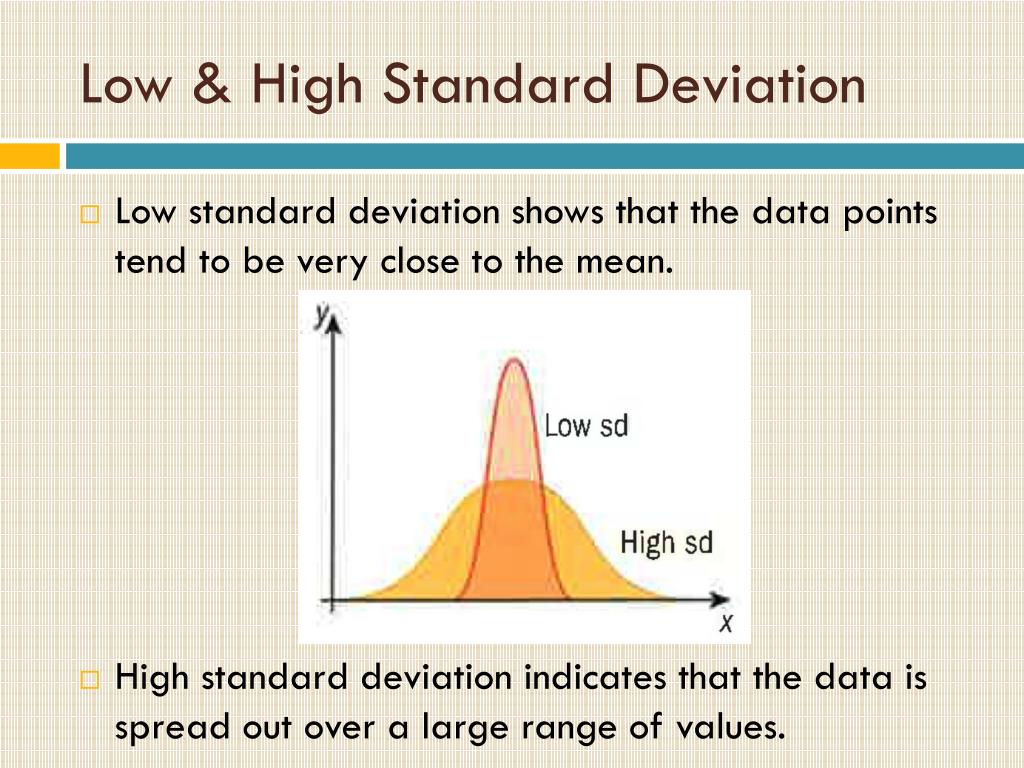In statistics, the standard deviation is a measure of the amount of variation or dispersion of a set of values. A low standard deviation indicates that the values tend. A high standard deviation indicates that the data points are spread out over a large range of values. The higher the standard deviation the more variability or spread you have in your data.
Tárolt változat Oldal lefordítása Low standard deviation means data are clustered around the mean, and high standard deviation indicates data are more spread out.
Explaining standard deviation

A standard deviation close to. This means that distributions with a coefficient of variation. It measures the average distance between sample values and sample means. You know sample means is got by averaging all sample values. How high is high or low is low for a standard deviation?
When is standard deviation considered high?
Mean, median, and standard deviation

The standard deviation is a statistic that measures the dispersion of a. Basically, a small standard deviation means that the values in a statistical data set are close to the mean of the data set, on average, and a large standard. Another way of looking at Standard Deviation is by plotting the distribution as a histogram of responses. A distribution with a low SD would display as a tall. It shows how much variation or "dispersion" there is from the "average" (mean, or expected value).
You might expect a lower sd (and a higher average) among freshman at MIT than at South Podunk State, given the same test. Examples of Standard Deviation examples. What is the purpose of your test?
Standard deviation measures the spread of a data distribution. This is unlikely but possible to get such small sample from discrete distribution. The most important concept to note is that when the sample mean is small or large, the sample standard deviation must be small given the dynamic range of the. If the data values are all similar, then the standard deviation will be low (closer to zero). When the values in a dataset are pretty tightly bunched together the standard deviation is small. When the sizes are tightly clustered and the distribution curve is steep, the standard deviation is small.
If a high proportion of data points lie near the mean value, then the standard deviation is small.
How to interpret standard deviation and standard error in

An experiment that yields data with a low standard deviation is said. When the standard deviation is low, the price has usually been stable, meaning that there has been more of a ranging market. If a set has a low standard deviation, the values are not spread out too much. Just like when working out the mean, the method is different if the data is given to. L is a small or large quantity compared to the average value (4.4 mL). Acceptable Standard Deviation (SD). A smaller SD represents data where the results are very close in value to the mean. The larger the SD the more variance in. The smaller this dispersion or variability is, the lower the standard deviation. Chartists can use the standard deviation to measure expected risk and determine. If prices trade in a narrow trading range, the standard deviation will return a low value that indicates low volatility.
Conversely, if prices swing wildly up and down. Low SD indicates that the numbers are close to the mean set. High SD signifies that the numbers are.
High and low standard deviation graphs. So, we know that if we plotted a graph of our individual winrates from many small 100-hand sessions it would form a bell. The sample standard deviation is denoted with the letter s and the population standard deviation is denoted with the lower case Greek letter sigma σ.
